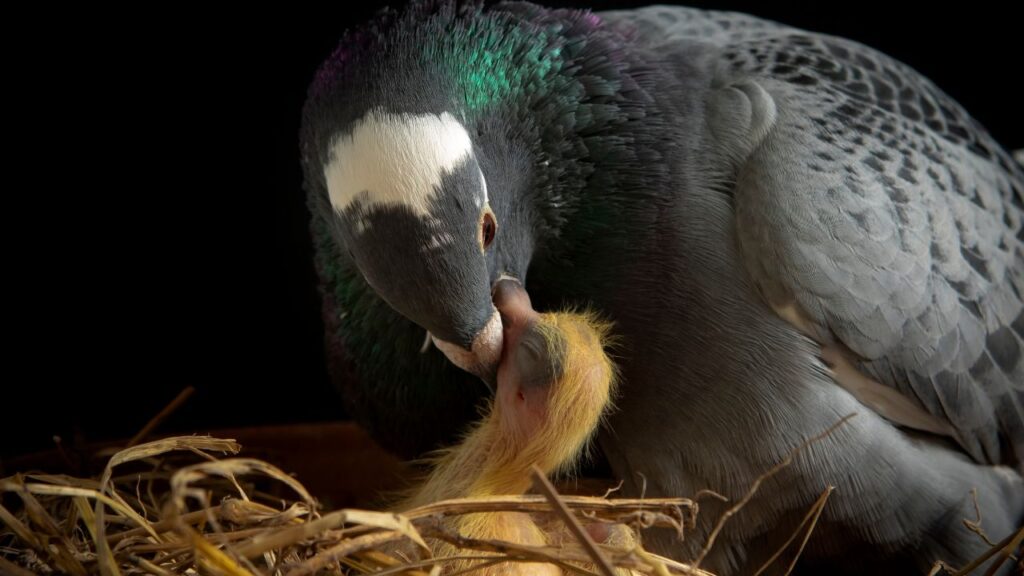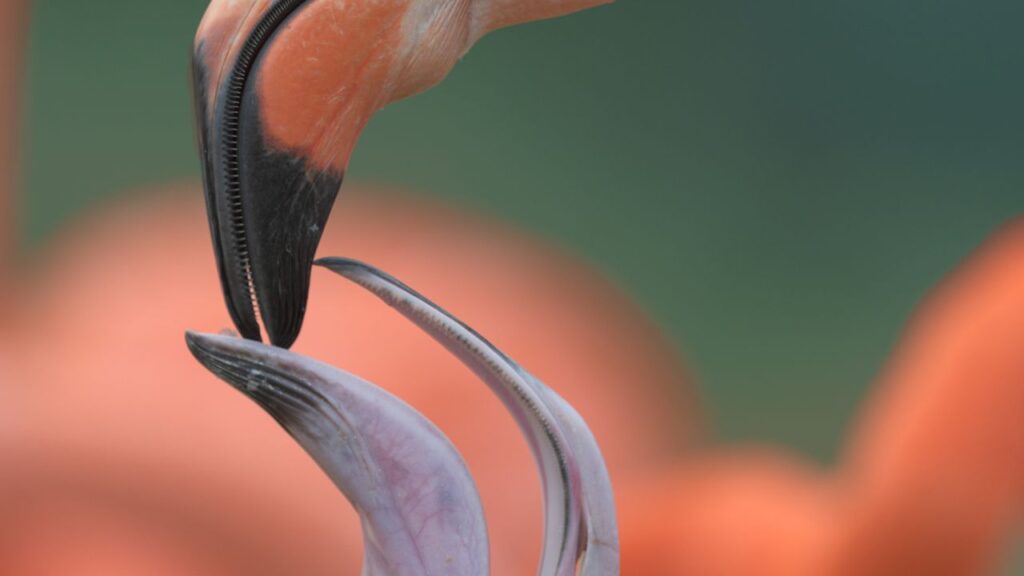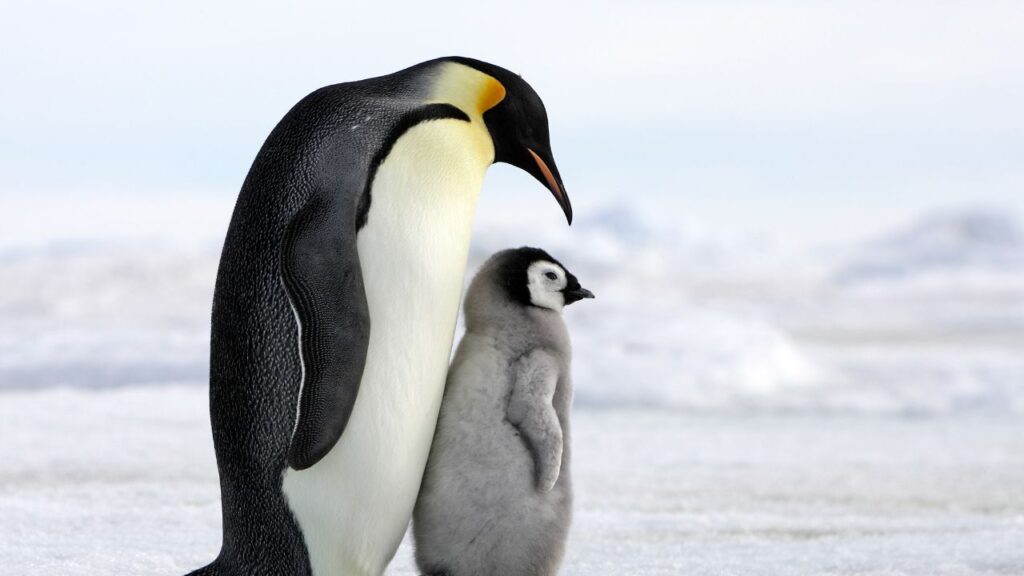
The world of avian parenting is vast and diverse, and there’s still a lot that we need to discover about it. Although a lot has been learned and preached about birds, a lot of us are still unfamiliar with the methods by which birds nourish their Offspring. Many of you may have read in books how birds bring food in their beak and feed it to their children. But the only way birds nourish their babies, but it has a lot of fascinating and surprising addition to it.
Do Birds Secrete Milk To Feed Baby Birds?
While most birds are known to gather and bring feed for their babies, some birds also feed milk to their Offspring. While most of us associate milk production with mammals, there’s a group of birds who have adopted this approach of nurturing their young ones by feeding their ‘Milk’. The last line may have surprised you, but you read it right. Some birds do secrete milk and feed their Offspring.
Join us as we explore the mysterious world of lactation in birds. From Pigeons to some seabirds, a lot of feathered beings produce milk. This article will e unveil the surprising facts behind this intriguing phenomenon, so prepare to be amazed. Do Birds Secrete Milk Like Mammals?
Do Mother Birds Feed Milk to Their Babies?
Mother Birds do feed milk to their babies, but it is essential to learn that Birds do not produce Milk the same as Mammals. A selective species of birds produce a substance called “Pigeon Milk” or “Crop Milk”. The phenomenon of producing Crop Milk is often observed in pigeons, doves, flamingos, and some species of penguins.
Crop Milk or Pigeon Milk isn’t actual Milk that cows, buffalos, humans and other mammals produce. However, it is a secretion produced by the crop, which is a specialized pouch-like structure in the bird’s esophagus.
DID YOU KNOW? What’s surprising is that unlike Mammals, where only females produce milk, both male and female birds can produce crop milk.
While milk production is exclusive to mammals, certain birds like pigeons, penguins, and flamingos produce a milk-like substance with similar benefits for their offspring. Pigeon milk is produced by both male and female pigeons in their crop and is controlled by the hormone prolactin. Bird Milk contains 60% Protein, 32% to 36% fat, 1% to 3% carbohydrate, and minerals like calcium, potassium, sodium and phosphorus. Crop milk is highly nutritious, and it also contains IgA antibodies along with assorted non-pathogenic bacteria.
Which Bird Produce Milk and How?
Birds produce crop milk by regurgitating a nutritious fluid, which contains high levels of fat and protein. However, the nature of producing Crop milk is more common with the parents of young offspring and older birds or even younger ones may not be able to do the same.
Bird milk is an important source of nutrition for the growing chicks who are in their early developmental stages. By feeding crop milk, Birds can provide a concentrated and easily digestible food source to their young ones.
Birds can produce milk, and this remarkable adaptation showcases the diversity and ingenious of nature. It is truly surprising and, at the same time, fascinating how nature cares for every being present around in different ways.
Which Birds Feed Milk to Their Babies?
Birds produce “crop milk” or “pigeon milk” to feed their offspring.
PLEASE NOTE: Bird Milk, aka Crop Milk, isn’t similar to Mammalian Milk.
Birds produce Crop milk and regurgitate this nutritious fluid to feed it directly to their chicks. Bird Milk provides essential nutrients for the growth and development of tiny chicks.
Here are some examples of birds that produce milk:

Pigeons and Doves: Both male and female pigeons and doves produce crop milk; however, this nature is limited to some species. For example, Rock Pigeon (Columba livia) is one of the very common birds that can produce milk.

Flamingos: Similarly, both male and female Flamingos are known for their striking pink plumage and their unique feeding behaviour. Flamingos produce a special milk-like substance that helps their Offspring gain the right nutrition during the initial growing stage.

Penguins: Only male Penguins and that too the Emperor Penguin (Aptenodytes forsteri) produce a form of Crop milk. This essential nutrient source helps the young Penguins survive and grow during the harsh Antarctic winter.
At What Age Do Birds stop feeding Milk to their Offsprings?
Birds stop feeding milk to their Offspring between 4 and 6 weeks of age. The time though particularly depends upon the species of bird.
Most birds transit their chicks gradually from crop milk to solid food. As the young birds grow and develop the ability to feed themselves, the parent bird stops feeding them milk. This process typically occurs over a few weeks to a couple of months, depending on the bird species and their specific developmental needs.
Pigeons feed crop milk for up to two weeks after the chick hatches. In contrast, flamingos wean off their chicks from crop milk at around two to three months of age.
The timing of weaning from crop milk is an essential aspect of a bird’s parental care strategy.
What Are Some of the Other Ways Birds Feed Their Babies?
Besides feeding Crop Milk, there are multiple other ways birds feed their Offspring. These ways can differ based on the species and their ecological niche, for instance:
- Birds like songbirds, raptors, and waterfowl regurgitate partially digested food and feed it to their young ones. This act involves the parent bird finding food, bringing it back to its nest and then transferring it from its crop to the young bird’s mouth.
- Swallow flycatchers and other Insectivorous birds catch feed on their wings and feed it to their Offspring. They either break it into smaller pieces before feeding or feed as a whole.
- Birds, including Owls, hawks, and eagles, hunt larger prey, tear them into small pieces and then feed to their babies.
- Gulls, Pelicans, Terns and other Seabirds feed their young with whole fish.
- Whereas Hummingbirds sip nectar from flowers, store it in their specialized tongues and bills, and then regurgitate it to feed their chicks.
- Sparrows, finches and other Granivorous birds feed seeds and plant materials softened in their crop to their babies.
- Birds like Cowbirds, Cuckoos etc, practice brood parasitism. They lay their eggs in the nests of other bird species, which then raise the parasitic chicks.
Conclusion
In conclusion, while birds don’t produce milk like mammals, certain species use “crop milk” to nourish their young. Crop milk isn’t actual milk like the one mammals produce, but it acts as a food source.

Hi, There and Welcome to BirdsNews.com, is here to help you learn and care about pet birds. and this blog is a journal of everything I’ve learned.
